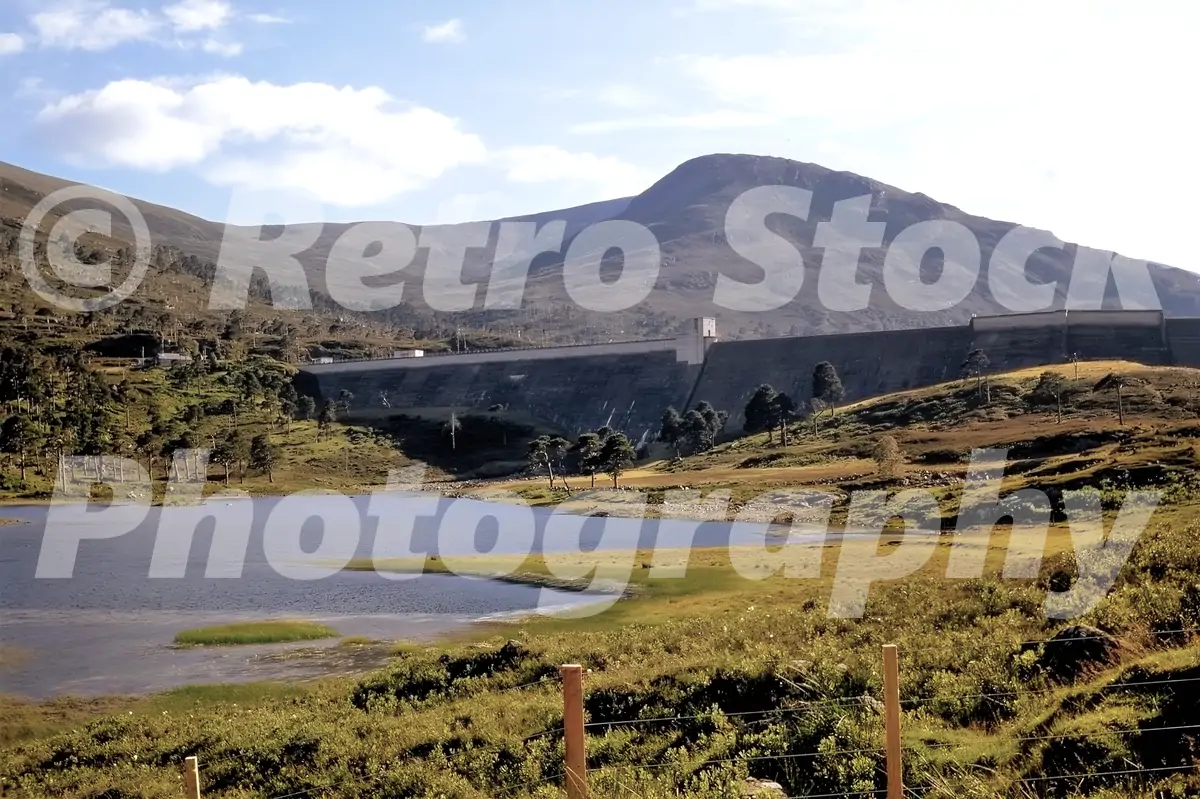Hidden deep within Glen Cannich in the Northwest Highlands, the Loch Mullardoch Dam is one of Scotland’s most remarkable feats of post-war engineering. Completed in 1952, the dam transformed Loch Mullardoch from a natural loch into a vast reservoir nearly twice its original length—stretching westward for around 14 kilometres and flooding parts of the glen in the process.
The dam was built as part of the Affric–Beauly hydro-electric scheme, a project launched by the North of Scotland Hydro-Electric Board to bring electricity to remote Highland communities. Designed by engineers James Williamson and W.M. Halcrow & Partners, the dam is a mass gravity structure rising 49 metres high and extending 727 metres across—making it the largest dam built by the board.
Water from Loch Mullardoch is channelled through tunnels to Loch Beinn a’ Mheadhoin and eventually to the Fasnakyle Power Station, which lies underground. A smaller turbine near the dam generates power locally, while the larger network—including Deanie, Culligran, Aigas, and Kilmorack stations—contributes significantly to the region’s renewable energy supply.
Today, the Mullardoch Dam is not only an important piece of infrastructure but also a part of Scotland’s industrial heritage. It was awarded Category B listed status in 2011 in recognition of its engineering significance. The dam’s setting—surrounded by towering Munros like Càrn Eighe—also makes it a popular destination for hikers seeking solitude in one of the most remote corners of the Highlands.






Reviews
There are no reviews yet.